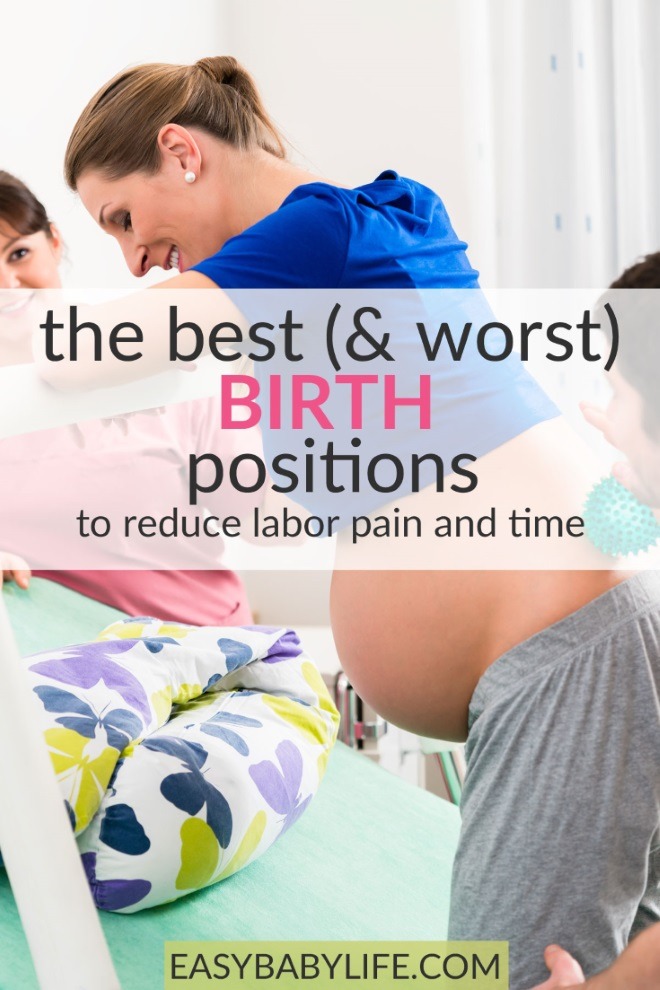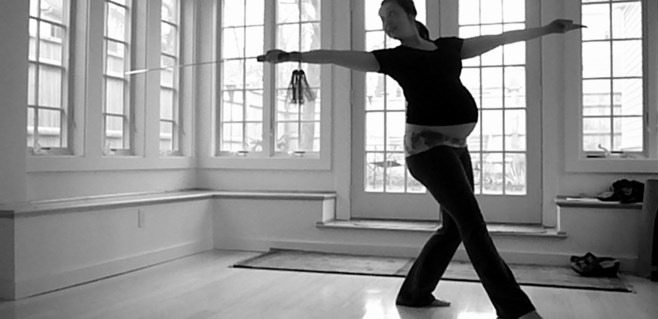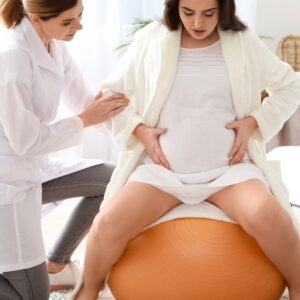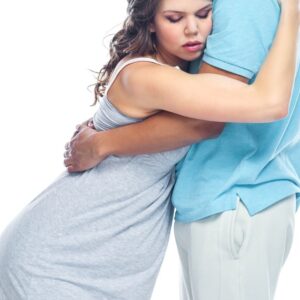What are the best birth positions to ease labor pain? And to prevent tearing? Although “flat-on-your-back” is not an efficient birthing position to achieve any of these two goals, it is a very common position to deliver your baby.
Of the +500 moms that have answered in our poll on birth positions so far, over 70% gave birth lying on their back.
So, what are the alternatives? And what benefits do they have?
Let’s go through the best birth positions to consider for each stage of labor.

Choosing the right birth positions can both reduce labor pain and the time it takes to give birth.
Unfortunately, most women still end up lying on their backs to give birth. That’s about the worst position possible for the woman and was implemented way back to ensure that the doctor/midwife had a good view of the birthing. Ugh!
In this article, we’ll walk you through which birth positions might be helpful during different stages of labor and why.
Birth Positions to Ease Labor Pain Stage By Stage
In this article…
Why care about the birthing position?
There are many reasons why you would want to care about what type of birth position you’re using. Here are some really good reasons:
- Simply changing positions and moving your body around while you’re in labor will help make the entire process easier.
- You can help reduce pain and give increased comfort as well as get a better sense of control over the situation.
- This also helps with how often and how long the contractions are and how effective each contraction is.
- You will also ensure that your baby gets a steady oxygen supply.
- Different positions can help you use gravity to get the baby to move into the birth canal faster, reducing your labor time.
Convinced? Then let’s take a look at birth positions to reduce labor pain and time that are safe and good for your baby!
Birth Positions during the first stage of Labor
The first stage of labor is the dilation. This can go on for many hours and be very painful. Finding ways to relax and help move the process forward are key. Since the stage can go on for many hours, variating your positions is important, too, to be as comfortable as possible.
Many women that are in the first stage of labor prefer to lie on their side. You can even place pillows between your knees for extra comfort. This helps to alleviate some of the pain from the contractions.
Some women opt for a semi-sitting position. You can do this on a couch or even in a bed as well as with your partner, because you can lean against your partner with his arms around you. If you want to help enlarge the pelvis to help the baby get the best position possible, then you may want to sit with one foot up. Your partner can help by massaging your back to help relieve some of the pain from back labor.
The key during this often long stage of labor (from the first contraction until fully dilated) is to focus on helping yourself to relax as much as possible.
In the beginning, before the contractions have become really painful, it can be good to try to simply ignore them. Try walking around a bit, reading a book, having something to eat, or doing whatever helps you feel normal.
As contractions become stronger and you can’t ignore them anymore, find birth positions that help you relax and focus on breathing. Personally, I’ve preferred standing on my knees leaning towards a couch or an alleviated part of the bed. If you also place a really large pillow or something similar in front of you, you can then simply fall back, almost sitting on your feet, and rest your head and body on a pillow when contractions get really bad. All to help you relax.
Lying on your side can also be comfortable when contractions are strong. Lying flat on your back is usually not very comfortable; in such cases, sit up in a reclining position instead.
In addition to varying your positions, I strongly recommend learning relaxation techniques and that your birth partner learn massage techniques to help you. I tool a prenatal prep course targeting the pregnant mom and her birth partner together with my husband and it was amazing how much he could help me during labor!
Birth Positions during the second stage of Labor
When you get into the second stage of labor, that means the baby is ready to come, and you are about to push. One of the most common positions for this part of labor would be to lay on your back with the pelvic outlet open as much as possible. This allows the doctor to get where he or she needs, but that is where the benefits of this position end. Lying on your back to push means that you push the baby upwards; not very efficient!
Pretty much any other position will be better for you. Relaxation and help from gravity are extremely important to get your baby out fast and with minimal tissue tearing.
You may want to try semi-sitting. This is where you can put pillows underneath your back, arms, and knees. When you are in the middle of a contraction, you can put your hands around your knees using this position to pull up like you’re squatting. If you have problems with high blood pressure, your doctor may require you to lie on your side during labor, as this helps lower your blood pressure and make things more comfortable for you.
Side-lying and using a birthing stool are other good, relaxing positions while pushing. If you can stand on your hands and knees or only on your knees during this stage, these positions are also great for gravity. But if you can’t relax, try another position.
Semi-sitting and side-lying are good birth positions to prevent tearing – something most women are interested in!
Find more birth video clips here.
Talk to your doctor about your options for birthing positions and try each position to see which one you feel most comfortable with. Remember that when you are in labor, these positions may feel different, so go with what feels best for you once you’re giving birth.

Now over to you! What birth positions do you prefer? Do you actively consider which are the best birth positions to ease pain and prevent tearing?
Research references
- Jing Huang, Yu Zang, Li-Hua Ren, Feng-Juan Li, Hong Lu, A review and comparison of common maternal positions during the second-stage of labor, International Journal of Nursing Sciences, Volume 6, Issue 4, 2019,
- Valiani M, Rezaie M, Shahshahan Z. Comparative study on the influence of three delivery positions on pain intensity during the second stage of labor. Iran J Nurs Midwifery Res. 2016 Jul-Aug;21(4):372-8. doi: 10.4103/1735-9066.185578. PMID: 27563320; PMCID: PMC4979260.

Paula Dennholt founded Easy Baby Life in 2006 and has been a passionate parenting and pregnancy writer since then. Her parenting approach and writing are based on studies in cognitive-behavioral models and therapy for children and her experience as a mother and stepmother. Life as a parent has convinced her of how crucial it is to put relationships before rules. She strongly believes in positive parenting and a science-based approach.
Paula cooperates with a team of pediatricians who assist in reviewing and writing articles.







The more things change — during the 1600s and into the 1700s the birthing chair was used. It’s just as it sounds. It was an upright chair with hand holds on the tip of the arms which the woman could grab, help her to lean forward etc. Of course there was a large hole in the seat for the baby to go through, and where the midwife would sit and assist once the baby appeared.
In the later 1700s when men took over the birthing process, women were put on their backs because this made it easy for the doctor to work; but it was ridiculous as it did not allow the woman to have gravity assist in the process. Glad to know that, in a way, we are taking a good step backward.
really knowledgeable….